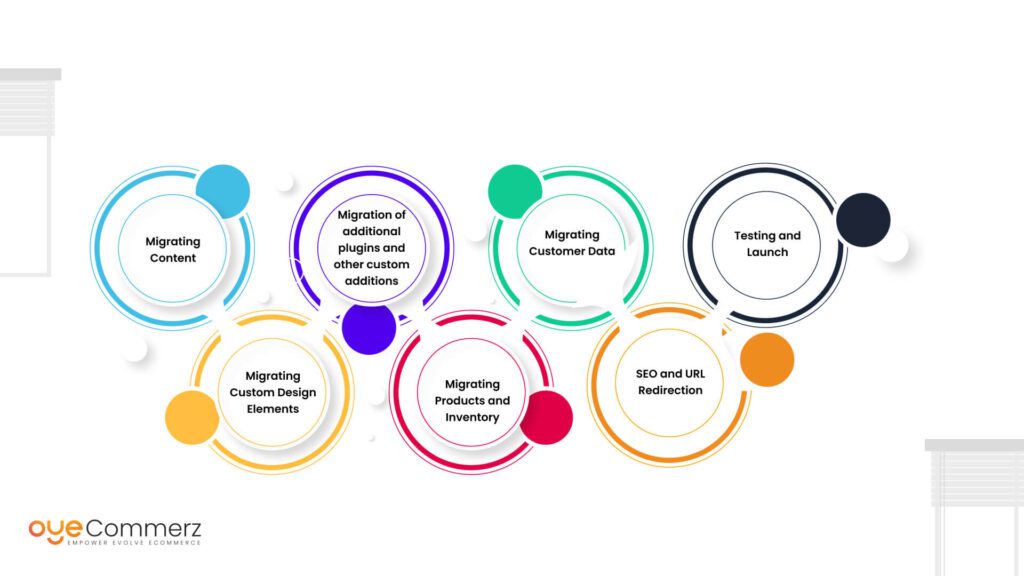Transitioning from WP to Shopify is an promising step toward optimizing your online store processes. As businesses grow, selecting a solution that supports growth potential, user experience, and flexibility becomes crucial. Shopify is widely recognized as a favorite for e-commerce professionals, providing unmatched adaptability, security, and user-friendliness. In this guide, we’ll explore the transformative impact of this migration, discuss the benefits, and provide actionable steps to facilitate a smooth move.
1. Why Switch from WordPress to Shopify?
WordPress, paired with WooCommerce, continues to support countless online stores. However, as businesses scale, challenges like reliance on plugins, data risks, and complex setups can hinder progress. Shopify, specifically created for e-commerce, addresses these concerns with an comprehensive, intuitive platform. Statistics supports this shift—Shopify hosts over 4.4 million websites worldwide, with a documented 10% increase in sales conversion rates for numerous merchants post-switch.
2. Key Benefits of Shopify for E-commerce Success
Shopify’s powerful platform is tailored for scaling brands. Its notable features include:
- Effortless Design Flexibility: Shopify offers over 80 expertly crafted themes.
- Integrated Tools: Capabilities such as Shopify Payments and built-in SEO save time and effort.
- International Expansion: Currency versatility and localization features enable businesses to reach global markets.
Additionally, Shopify boasts an availability percentage of 99.98%, guaranteeing your store is always operational.
3. Getting Ready for Your WP-to-Shopify Transition
Before migrating, assess your current store. Review product data, customer details, and SEO performance. Tools like Shopify’s Migration Kit or external tools help ease the transition. Create a comprehensive plan, making sure all resources—product descriptions, images, and blog content—are ready for seamless import.
4. Data Migration: A Critical Step
Data migration is a cornerstone of a successful transition. When migrating from WordPress to Shopify, focus on:
- Inventory Details: SKU, descriptions, and categories.
- Migrate from WordPress to Shopify Client Information: Emails, purchase records, and custom fields.
- Search Engine Considerations: Preserve meta tags, URLs, and redirects to maintain search rankings.
Use apps like LitExtension to streamline data transfer while reducing mistakes.
5. Customizing Your Shopify Store
After the move, customizing your Shopify store helps it aligns with your brand. Utilize Shopify’s intuitive page builder to create layouts with ease. Shopify's themes are optimized for all devices, ensuring a seamless UX across devices—a key point, since 74% of online shopping is generated by mobile visitors.
6. How to Protect Your SEO Rankings When Switching Platforms
SEO is vital for preserving your online presence during migration. Shopify is highly optimized for search engines with organized link formatting, built-in optimization tools, and seamless blog integration. Make sure you:
- Implement Shopify migration process 301 redirects for old URLs.
- Optimize new pages with targeted phrases.
- Use Shopify's apps Plug in SEO to monitor performance post-migration.
7. Essential Tests After Migrating to Shopify
Once the migration is complete, run detailed checks.
Review:- Website speed (Shopify boasts faster speeds compared to WP).
- Payment integration reliability and transaction flow.
- Adaptability across devices.
Testing ensures your store delivers a seamless shopping journey from the start.
8. Case Study of a Successful Migration
An example of effective platform switching is Gymshark, a sportswear company that moved to Shopify. Post-migration, the company saw a 60% boost in mobile sales and significantly lowered site downtime. This showcases the capabilities of Shopify in driving online business success.
9. Overcoming Common Migration Issues
Migration comes with challenges, such as information accuracy and reconfiguring custom functionalities. However, Shopify’s extensive assistance and third-party experts simplify the process. Collaborating with experienced Shopify developers ensures a trouble-free transition.
10. Making the Switch: The First Step Toward Success
Migrating from WordPress to Shopify marks a forward-thinking decision to online retail. By addressing scalability, simplifying management, and enhancing the customer experience, Shopify enables companies to thrive in challenging industries.
Conclusion
Transitioning from WordPress to Shopify offers a smart solution that can greatly enhance your online business performance. With a robust migration plan, the appropriate resources, and professional guidance, you can achieve new growth opportunities.
Ready to make the leap? Let’s discuss how our Shopify migration services can revolutionize your e-commerce platform. Get in touch today, or consider: Is it time to seize Shopify’s advantages for your store?

Comments on “Seamless WordPress to Shopify Migration: A Comprehensive Roadmap for E-commerce Growth”